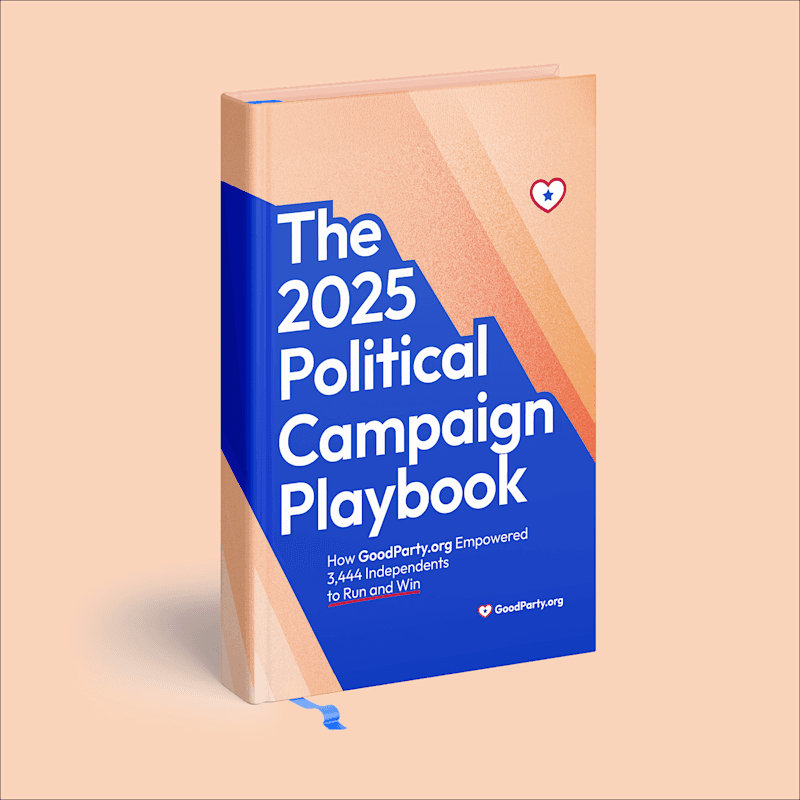
Top-Two Primary Elections, Explained
Primary elections are an essential component of the democratic process. During the primaries, voters select the candidates who will represent their political parties in the general elections. However, not every primary election process is the same.
In certain states, voters can vote for any candidate, regardless of party affiliation, while in other states, they must choose between candidates from a specific party. Top-two primary elections fall in the first category, letting voters choose the candidates who will move onto the general election without having to check the box of party affiliation.
How Top-Two Primary Elections Work
In top-two primary elections, all candidates, regardless of their party affiliation, compete on the same primary ballot. Then, regardless of their political affiliation, the top two vote-getters move onto the general election.
In most states, primary elections typically result in one Republican candidate, one Democratic candidate, and any number of independent and third-party candidates moving onto the general election. In states that use top-two primaries, however, the slate of candidates moving onto the general election can look a bit different. Two Republican candidates could end up advancing to the general election, for instance. So could two Democratic candidates, two independent candidates, or a combination of one partisan and one independent candidate.
Top-two primary elections are primarily intended to provide greater voter choice and flexibility in choosing voters’ preferred candidates, free from the restrictions of party affiliation. The proponents of this primary election system contend that it promotes more diverse and moderate candidates, lessens the power of special interests and party elites, and boosts voter participation and turnout.
States Using Top-Two Primaries
Three states have adopted election laws that support the top-two primary system for certain elections:
California: California adopted top-two political primaries for a variety of electoral decision-making in 2010 after California Proposition 14 was adopted into state election law, highlighting a break from conventional party-centric election methods and traditional political party nominations.
Nebraska: Nebraska uses top-two primary elections for its state congressional elections. The Nebraska state legislature is non-partisan, meaning that the names of state legislative candidates are not accompanied by labels indicating their political affiliation. This non-partisan approach challenges the conventional wisdom of political party nominations and is consistent with the state's aim to promote a political environment based on individual ability and merit.
Washington: After Washington Initiative 872 was approved in 2004, Washington became the first state to use this alternative primary system for congressional and state-level elections.
Two additional states have implemented variations of top-two political primaries:
Alaska: Ballot Measure 2, which established top-four primary elections for legislative, state executive, and congressional elections, was approved by Alaska voters in 2020. With this variation, ranked choice voting has also been used in Alaska elections, allowing for a greater level of voter choice.
Louisiana: Louisiana adopts a unique electoral system by foregoing the traditional primary election systems. In Louisiana, all candidates appear on the same ballot. If a candidate obtains a simple majority, they win the election. If not, the top two candidates advance to a second election. This form of electoral decision-making is sometimes called a “jungle primary.”
Differences with Standard Open and Closed Primaries
The two most common types of primary election in the United States are open and closed primaries. Different states have different rules within these two types of primaries, but generally, voters must choose whether they want to vote using a Democratic ballot or a Republican ballot. Democratic and Republican candidates do not appear on the same ballot, as they do in a top-two primary system.
Here are the key differences between a standard open or closed primary and top-two primaries:
Combined Ballot: All candidates, regardless of their party affiliation, are listed on the same ballot in a top-two primary. Regardless of party, the top two vote-getters move onto the general election. In a typical open or closed primary election process, voters select candidates from a particular party, and the winners of each party's primary move on to face off in the general election.
Party Registration: All voters, regardless of their party registration status or lack thereof, are eligible to participate in a top-two primary election process. In an open primary, all voters can participate, but in a closed primary, voting in the primary is restricted to registered party members.
Candidates from Different Parties: If two candidates from the same party finish among the top two in a top-two primary, there may be a same-party general election. This may occur in a district where a party controls a sizable majority of the candidates or votes. Unless a party chooses not to field any candidates, a conventional open or closed primary guarantees that there will be a candidate from each major party in the general election.
Ideological Extremes: Since the candidates in a top-two primary must win over a wider range of voters, ideological extremes and the influence of party leaders may have less of an impact on the candidate nomination process. Ideological extremes and party leaders may have greater influence in a traditional open or closed primary.
Campaign Costs: Given that candidates must reach out to more voters and compete with more opponents, a top-two primary may result in higher campaign costs and complexity. In a traditional closed or open primary, candidates can concentrate on fewer opponents and voters, resulting in lower campaign costs and complexity.
Advantages and Disadvantages of Top-Two Primaries
As with any alternative electoral system, top-two primaries have both supporters and opponents. Here are the main arguments for and against using top-two primaries:
Advantages of Top-Two Primary Elections
Increased Voter Participation: All voters can take part in a top-two primary, regardless of their party affiliation or non-affiliation. Voter turnout may rise as a result.
Reduced Extremism: Since candidates must win over a larger portion of the electorate, top-two primaries are more likely to inspire more pragmatic, moderate policies and candidates.
Reduced Spoiler Effect: Top-two primaries limit spoiler candidates from influencing the general election's result, because only the top two candidates move on. Concerns about wasted votes and strategic voting can decrease as a result.
Increased Competition: Since candidates must set themselves apart from their rivals and take into account the preferences of the broader electorate, top-two primaries increase accountability and competitiveness in the general election.
Simpler Elections: Top-two primaries streamline both the ballot and the electoral procedures, because there are just two candidates to select from in the general election. This simplification can lessen voter errors and encourage voter participation.
Potential for Cooperation: Top-two primaries can encourage more compromise and cooperation among politicians, because leaders have to work across political boundaries and represent a larger range of voters.
Disadvantages of Top-Two Primary Elections
Limited Choices: Top-two primaries limit the number of options available to voters in the general election since only two candidates are listed on the general election’s ballot.
Campaign Costs: Since candidates must compete against more opponents in the primary election, top-two primaries may make campaigning more expensive. This could raise the barrier to entry for lesser-known candidates.
Voter Turnout: Depending on the level of competition and electoral diversity among the candidates in the primary and general elections, top-two primaries may have variable effects on voter turnout.
Need for Voter Education: Top-two primaries may create resentment and confusion among voters who might not comprehend or embrace the guidelines and ramifications of the new election system. This has the potential to undermine voters’ confidence in the electoral system's legitimacy.
Parties’ Interests: Top-two primaries could infringe upon political parties' rights and interests. Some would argue that limiting the influence of political parties in elections is a disadvantage, while others may actually see it as an advantage.
Join the Movement for Electoral Reform
Top-two primary elections are just one way that states across the country are working to build more effective and impartial elections. The broader movement for electoral reform includes proponents of open primaries, ranked choice voting, approval voting, STAR voting, and other alternative voting systems.
Become part of the movement for change today! Join GoodParty.org’s growing community of changemakers and independent thinkers, or become part of the community by signing up as a volunteer. Click here to join the GoodParty.org Community, or click here to learn more about how you can make an impact by volunteering with GoodParty.org.

